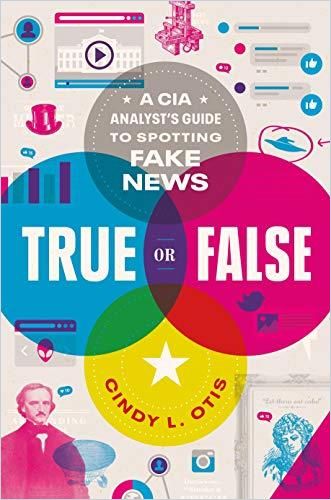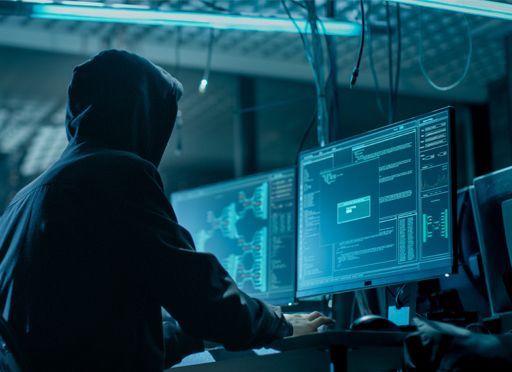Former CIA military analyst Cindy L. Otis offers a concise, knowing overview of fake news and its strategies and tactics.

A Fight for the Truth
Former CIA military analyst Cindy L. Otis has a deep background in information analysis: She was an intelligence briefer serving the White House and a CIA branch chief. She is now a senior nonresident fellow at the Atlantic Council’s Digital Forensic Research Lab and an associate at Argonne National Lab.
Otis’s guide to spotting fake news is written for young readers, and it showcases her considerable expertise. She proves knowledgeable, responsible and easy to read. She intended this to be a textbook for high-schoolers, but her ease with the subject and apolitical common sense make it a useful primer for college students and adults as well. Readers outside the United States will benefit from her comprehensive breakdown of the dynamics of fake news.
Otis emphasizes how the wide, rapid spread of misinformation undermines public trust. She reminds readers that society needs trust to function. This becomes a crucial theme throughout the book, and the author returns to it often. Clearly, she seeks to nurture a sense of national community in young readers. In doing so, Otis provides concise, politically neutral advice that’s clear, actionable and, at times, witty. She writes as an amusing, credible adult whom young readers will listen to willingly. For example, she offers a handy aphorism for discerning real news from fake: Real news seeks to inform; fake news seeks to deceive.
When you are talking with people, get in the habit of asking them how they know what they have said is a fact.Cindy L. Otis
Many outlets, especially those serving younger readers, had high praise for Otis’s work. In its starred review, the School Library Journal said, “A necessary and engaging resource that should be required reading for all high school students…The book’s droll tone and quick pace will thoroughly engage even those who dislike nonfiction; all readers will be empowered with a more critical eye when browsing their news feeds.”
For historical context, richer political sophistication and more in-depth coverage – though perhaps less political neutrality – worthwhile companion reads include Nina Jankowicz’s piercing How To Lose the Information War – an in-depth analysis of disinformation tactics and strategy – and Thomas Rid’s Active Measures, a history of political disinformation.
People use propaganda to sway others by spreading persuasive information, true or not, Otis explains. Propagandists assert that they know the truth and everyone else is lying.
To establish context, she tracks fake news back through history. She notes that the advent of the printing press enabled news to spread quickly, so people used it for trickery.
Part of fighting fake news is also elevating and promoting those reputable sources, which means sharing the work of good journalists.Cindy L. Otis
The author cites Benjamin Franklin’s mock newspaper which featured false stories intended to make Britain sign a peace treaty with the American colonies.
Governments and Corporations
Her years at the CIA grant Otis profound insight into how the United States Central Intelligence Agency (CIA) uses “disinformation” or “influence of information operations” campaigns – fake news. On the other side, the Soviets also use disinformation campaigns, including deploying them against the United States. They realized, Otis reveals, that Americans were susceptible to “fake government plots.”
A fake news story is always much more believable when there are enough true details to sound like the writer knows what he is talking about.Cindy L. Otis
Otis addresses the insidious power of doubt – heightened by the internet – to shatter public trust in government and societal bonds. And she emphasizes the necessity of those bonds. Otis discovered that fake news stories spread up to six times faster than true stories. Because people pay more attention to negative news and to news that appears in great volume, she explains, fake news engenders anger, mistrust and fear. She presents this book as an antidote to those toxic emotions. In exhorting readers to fight fake news, the author suggests they report false stories – and check what they read – at Snopes.com, The Poynter Institute’s PolitiFact.com, FactCheck.org and Hoax-Slayer.net.
Bias
Otis stresses that even the most open-minded person has biases, which derive from race, gender, education, religion, life experiences, political identity, class and culture. Bias makes you vulnerable to fake news. Otis illustrates this point with studies showing that people gravitate to opinions that match their own, creating “bubbles” that allow no other points of view.
Makers of deep fakes will next turn to making videos that could lead to violence or even start wars.Cindy L. Otis
She urges her young readers to seek out opposing points of view, check their evidence and sources, and remain aware of which media might be government outlets and which ones favor those in power.
Fight Back
Otis tells readers that something isn’t fake news just because you disagree with it. She is clear that those who push fake news want you to surrender, to believe “nothing is true anymore” and to become apathetic. Fake news wants to make you doubt what is true. It reinforces your biases, manipulates your emotions, leads you to distrust government and feeds intolerance.
Otis has spent her career assessing information in a setting where any error has the gravest possible consequences. That makes her easy tone all the more admirable. She is not trying to impress young readers with her expertise; instead, she seeks to instill in them their own sense of personal responsibility regarding what they choose to believe and how they choose to act on those beliefs. Otis helps students and adults recognize the crucial importance of truth in public discourse. Her goal is to inspire all her readers to fight for that truth.







